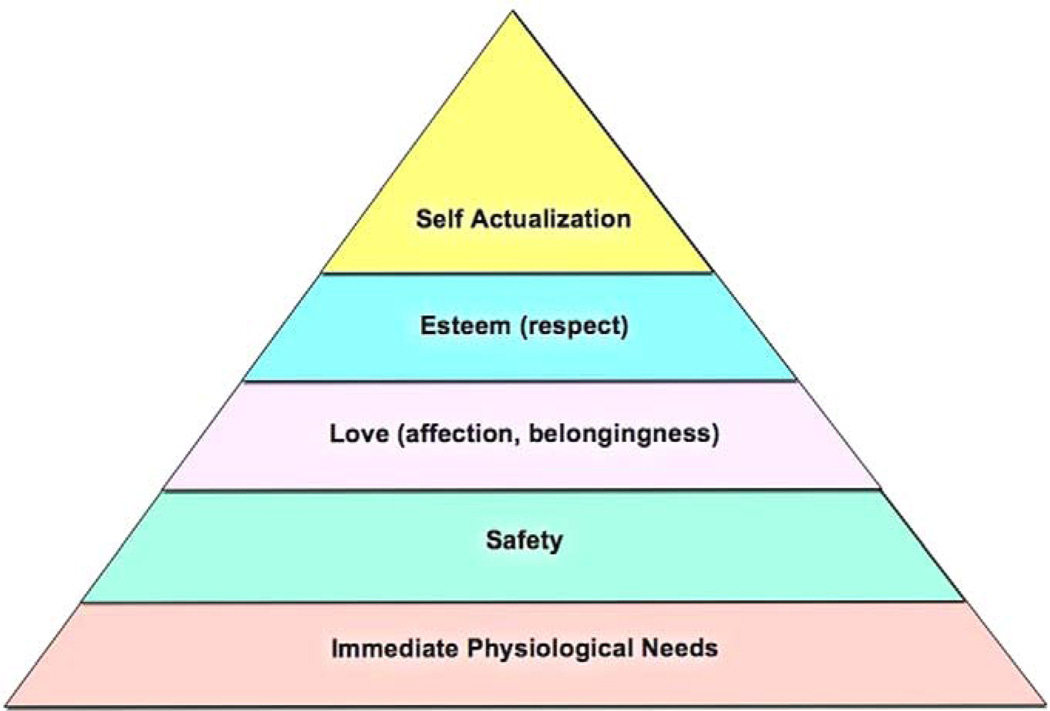Some guys back in 2010 revisited Abraham Maslow’s hierarchy of human needs and came up with an alternative version based on evolutionary psychology and related fields. Maslow’s framework consisted of five levels - physiological needs, safety, love and belonging, esteem and self-actualisation.
And this is the “updated hierarchy of fundamental human motives”:
Key changes
Removal of Self-Actualisation
They notably got rid of self-actualisation because it was no longer seen as a distinct, ultimate need. Instead, it’s meant to be absorbed by the status/esteem and mating-related motives. So qualities associated with self-actualisation like achievement, creativity and personal development are now considered to be part of these broader motives.
Addition of Reproductive Goals
Aligning with evolutionary priorities, they added reproductive goals of mate acquisition, mate retention and parenting, in the order they appear developmentally.
Overlapping Goals
Goals are no longer depicted as sequential. Instead, they overlap, acknowledging that early-developing motives (e.g., safety, physiological needs) persist alongside later-developing goals
What do I take away from this?
While you may think this ‘evolutionary’ pyramid of needs might seem obvious, it offers clear direction for prioritising our goals in life. The higher up you are on the pyramid the closer you are to your ultimate purpose of continuing your lineage. In order to ascend the up the hierarchy of needs, the more fundamental needs like shelter, food and belonging must be sturdy before one tries to ascend the social hierarchy and acquire a mate. Also, it is obviously in tune with natural development: your natural life-cycle as a human has afforded you time to work at the lower goals before you start adding higher goals to your list of priorities. Best of luck I guess!
Below are the list of needs defined and how they might be satisfied, just in case you wanted a familiarisiation (this was chatgpt-ed):
Immediate Physiological Needs - fulfilling basic requirements for survival - satisfied by accessing food, water, air, sleep, and maintaining a stable body temperature.
Self-Protection - ensuring safety and security from physical and social threats - satisfied by avoiding dangers, seeking shelter, and creating strategies to minimize risks or conflict.
Affiliation - building and maintaining social bonds and belonging to a group - satisfied by forming friendships, participating in group activities, and engaging in cooperative behaviors.
Status/Esteem - achieving respect, recognition, and social standing within a group - satisfied by accomplishments, demonstrating competence, earning admiration, and building reputation.
Mate Acquisition - finding and securing a romantic or sexual partner for reproduction or companionship - satisfied by developing attractive traits, pursuing potential partners, and demonstrating desirable qualities like status, resources, or kindness.
Mate Retention - maintaining a relationship with a partner to ensure ongoing reproductive and cooperative benefits - satisfied by engaging in behaviors that strengthen bonds, such as expressing love, loyalty, and addressing conflicts.
Parenting - caring for and nurturing offspring to ensure their survival and eventual reproductive success - satisfied by providing physical care, emotional support, protection, and guidance to children.





